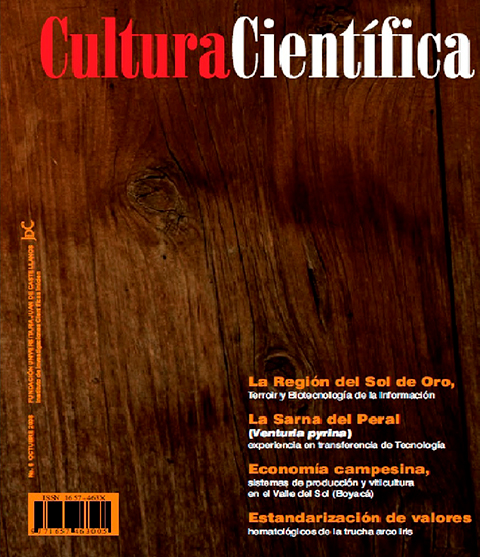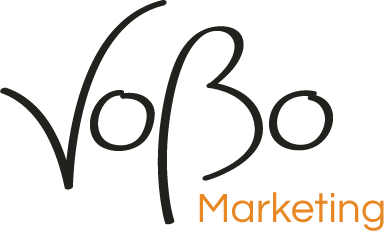Keywords:
Information theory, viticulture, Valle del Sol, terroir, quality, wineAbstract
Looking at the wine process from a non conventional view point can be useful for a better utilization of the terroir potential. Viticulture can be considered as a form of symbiosis in which success depends on intersymbiot communication. Moreover wine can be taken as a sensory information channel. It is thus interesting to look at the viticultural development as an information transfer process. Wine production becomes then a kind of information biotechnology connecting all concerned actors, from the origin, the terroir, until the destination, the consumer.
Downloads
References
BESSIS, P., HUDELOT , B. 2006. Evolution des cepages dans le cadre de la multiplication vegetative . Insertion de la vigne dans son milieu, recherche des facteurs naturels de selection et d’evolution. Bull. OI V, 79, 129-139 p.
BOU BAL S, D. 1996. Reporte a la Embajada de Francia en Bogotá sobre la Misión Técnica a los viñedos de la Unión (Valle del Cauca) y de Puntalarga (Boyacá) a cargo del Ministerio Francés de Cooperación Internacional, Paris.
BROCHET, F. 1999. The language of sensations. J. Int. des Sciences de la Vigne et du Vin, Special Issue. 37-41 p.
CARBONNEAU , A. 2003. Ecophysiologie de la vigne et terroir. En: Terroir, Zonazione, Viticoltura, Eds. M Fregoni, D. Schuster, A. Paoletti. Phytoline, 37010 Rivoli Veronese
DAVIES, K. 2000. Plant colour and fragrance. En: Metabolic Engineering of Plant Secondary Metabolism. R. Verpoorte y A.W. Alfermann, Eds. Kluwer, Dordrecth.
DRAWERT, F., KLISCH, W. y SOMMER, G. 1984. Wein. Handbuch der Biotechnologie. P. Praeve et al. Eds. Oldenbourg Verlag, Muenchen.
DUSENBERY, D. 2001. Physical constraints in sensory ecology. En Ecology of sensing, F.G. Barth., A. Schmid Eds. Springer Verlag, Berlin.
FALCETTI , M. 1994. Le Terroir. Bull. OIV. 247-275.
FISCHER, C. y SCOTT , T. 1997. Food Flavors, Biology and Chemistry. The Royal Society of chemistry, London.
FREGONI, M. 2003. Terroir e qualitè eccelsa del vino, ovvero la qualite del terroir. En: Terroir, Zonazione, Viticoltura, Eds. M Fregoni, D. Schuster, A. Paoletti. Phytoline, 37010 Rivoli Veronese
____________ 2005. Viticultura di Qualita. Phytoline, Rivoli Veronese. FREGO NI, M., PEZZUTO , S. 2000. Principes et premieres approches de l’indice bioclimatique de Fregoni. Progres Agricole et Viticole 117, 18, 390-396
FREGONI, M., SCHUSTER, D. y PAOLETTI A. 2003. Terroir, Zonazione, Viticoltura, Trattato Internazionale. Phytoline, 37010 Rivoli Veronese.
GÓMEZ-SIERRA, F. 2007. ¡Que vivan las fiestas! ¿Qué vivan…? Incorporación
tecnológica, mezcla de saberes y revitalización cultural. Cultura Científica. No. 5, 53-60 p.
GUI MBERTAU , G. et al. 1999. Wine Tasting, special issue. J. Int. des Sciences de la Vigne et du Vin, Bordeaux.
ILLY, E. 1982. Quality: first motor of the consumption of coffee. 10th International Scientific Colloquium on Coffee, Salvador (Bahia). ASIC, Paris.
JOHNSON, H. 1989. Une histoire mondiale du vin. Hachette, Paris.
JOYAR D, J. 2000. Les plantes dans leur environment. En: Le Monde Vegetal: du génome á la plante entiére. Animateur Roland Douce, Academie des Sciences. Tec Doc, Paris.
KAL BERER, S., WISNIEWSKI, M. y ARORA R. 2006. Deacclimation and reacclimation of cold-hardy plants: Current understanding and emerging concepts. Plant Science 171, 3-16 p.
KRUPA, S., KICKERT, R. y JAEGER, H. 1998. Elevated Ultraviolet (UV-B) Radiation and Agriculture. Springer Verlag, Berlín.
KSENZHEK, O. y VOLKOV, A. 1998. Plant Energetics. Academic Press, San Diego.
LINSKER, R. 1994. Sensory Processing and Information Theory. From Statistical Physics to Statistical Inference and Back. P. Grassberg and J.P. Nadal (Eds.), Kluwer, Amsterdam.
MAUR EL, Ch. y THELLIER, M. 2000. Responses adaptatives des vegetaux aux contraintes physicochimiques de l’environnement. En: Le Monde Vegetal: du gènome è la plante entiére. Animateur Roland Douce, Academie des Sciences. Tec Doc, Paris.
McGOVERN, P. 2003. Ancient wine: the search of the origins of viniculture. Princenton University Press, New Jersey.
MEMELINK, J. et al. 2000. Transcriptional regulators to modify secondary metabolism. En Metabolic Engineering of Plant Secondary Metabolism. R. Verpoorte y A.W. Alfermann, (Eds). Kluwer, Dordrecth.
MORLAT, R. et al. 2001. Terroirs Viticoles: Étude et Valorisation. Oenoplurimedia, 71570 Chaintré.
BALDY, M. 1997. The University Wine Course. The Wine Appreciation





